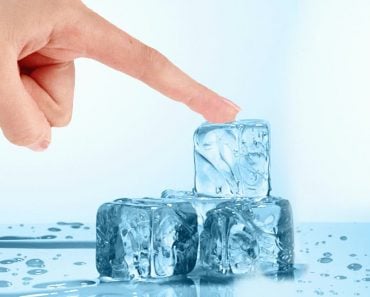Table of Contents (click to expand)
The stinging sensation is caused by the ice transferring heat away from your fingers. This causes the blood vessels to constrict and slows the flow of blood to the affected area. The nerves in the area become irritated, which causes the stinging sensation. If the contact is prolonged, the ice crystals can expand and cause the cells to burst, which can lead to frostbite.
As a kid, I often used to play with small ice cubes – I used to cram them in my mouth (sometimes two at a time), hit stuff with them from a distance, or simply put them in a bowl of water to witness their whole melting process. However, more often than not, my hands used to start hurting after a while. I felt strange sensations in my palms and fingers – as though they were being stung!
I thought it was rather strange, because it seemed illogical. I was playing with ice, which is inherently very cold, so how could it cause burning and numbing sensations in my hand?
This is a pretty common occurrence, namely that you feel as though your hands are burning when you hold or stay in physical contact with ice for too long. In fact, frost-burn, also known as frostbite, is one of the leading causes of death in extremely cold regions.
So, why does ice, which is as cold as anything, cause these burns?
Recommended Video for you:
Transfer Of Heat
It turns out that the sensations one feels and the subsequent damages one sustains when they hold a very cold object (say, an ice cube) are similar to the sensations and complications that result from being in physical contact with a very hot object. Even so, the biological process leading up to the negative consequences in the body are quite different.
You might already know that our body operates at an optimum temperature, i.e. in order for our body to survive, it needs a certain amount of heat. However, when we touch a piece of ice (which is a ‘cold’ object) with our fingers (a ‘hot’ object, due to the heat in the body), there is a transfer of heat. Note that under standard conditions, heat is transferred from objects at high temperatures to other objects at low temperatures. Since our fingers are the object at a higher temperature, they lose heat when touching ice, bringing their temperature down in the process.

Since the sudden loss of heat from the body is undesirable for the enzymes present in our body, their function is negatively impacted. Blood circulation to the part of the body in direct physical contact with the ice (usually hands or feet) also slows down. This may cause discomfort, but it’s actually a protective strategy that our body applies to preserve the core body temperature and combat a condition called ‘hypothermia’.
Reduced Blood Supply To The Affected Region
Our body first reduces blood flow to the affected area, and during prolonged exposure to cold, it will entirely cut off the blood supply to the exposed region. This is good for the body on the whole, but very bad for the affected organ, as it results in a deprivation of oxygen in the cells present in that body part. Neurons carrying messages to that specific body part get irritated, which causes that burning, stinging or “pins and needles” feeling in the affected area.

To delve a little deeper, after being in direct physical contact with ice, the water present inside the cells of our fingers tend to freeze and form ice crystals. If the physical contact is prolonged, these crystals can expand and cause the cell to burst. The consequences of such an event can be detrimental to the victim, as the liquid present inside the cell will release once it bursts, thus causing the destruction of the frozen tissue. This is the reason why people exposed to frostbite lose all sensation in the affected part of the body after prolonged exposure to the cold, which may render fingers, toes or the entire body part useless!
The treatment for a frost-bitten body part may range from thawing or ‘unfreezing’ the body part using passive rewarming (moving to a warmer location, wrapping in blankets etc.), active rewarming (direct supply of heat to the person using equipment), and even surgery or amputation in extreme cases.
Your best bet against burning yourself with ice is to cover your body, especially the extremities like your hands and feet, as comprehensively as you can while trekking through extremely cold regions. Also, when you’re back in the warm comfort of your house, find a better game than playing with ice cubes!













